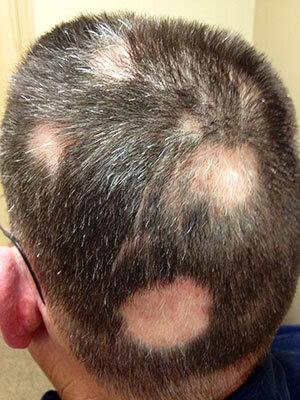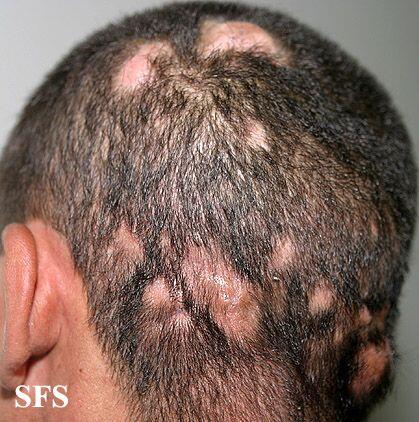Definition of Tinea Capitis
The term tinea capitis is used to refer to dermatophyte infections of the scalp and hair.

Geographical distribution of Tinea Capitis
The condition is worldwide in distribution, but is most prevalent in Africa, Asia and southern and eastern Europe, where it is the most common form of dermatophytosis. Improved standards of hygiene and prompt eradication of sporadic infection have led to a marked decline in the incidence of tinea capitis in North America and western Europe. Favus used to be worldwide in distribution, but is now confined to North Africa, the Middle East and parts of southern and eastern Europe.
Causal organisms
Tinea capitis is caused by a number of Trichophyton and Microsporum species. M. canis is a frequent cause of the condition in western Europe, but T. violaceum is predominant in eastern and southern Europe and North Africa. T. tonsurans is predominant in North America, and is becoming more common in the UK.
Tinea capitis due to anthropophilic Microsporum species is a contagious disease endemic in many countries. It is primarily a disease of children, being more common in males than females, and most prevalent between 6 and 10 years of age. The disease seldom persists beyond the age of 16. Large outbreaks often occur in schools or other places where children are congregated. The zoophilic Microsporum and Trichophyton species are seldom responsible for more than minor outbreaks of human infection. Household pets, such as dogs and cats, are a common source of infection, but feral cats are another prolific source of M. canis.
Tinea capitis due to anthropophilic Trichophyton species is another contagious disease. It is most common in male children under the age of 12.
T. schoenleinii is considered to be the sole aetiological agent of favus, although infections with other dermatophytes, such as M. gypseum, T. verrucosum and T. violaceum, can sometimes produce somewhat similar lesions. Although T. schoenleinii is an anthropophilic dermato-phyte, favus is less contagious than other forms of tinea capitis due to Microsporum or other Trichophyton species. It is usually contracted in childhood and may persist into adult life. Debilitated or malnourished children, or children suffering from a chronic disease such as tuberculosis, are more susceptible to this infection. Instances have been reported in which several generations of the same family were affected.
Management of Tinea Capitis
If possible, specimens for mycological examination should be taken before starting treatment. If oral treatment is being considered, mycological confirmation of the clinical diagnosis is essential before treatment is commenced.
Terbinafine (250 mg/day for 2 weeks) and itraconazole (100 mg/day for 2 weeks) have both proved effective in the oral treatment of tinea capitis, but neither compound is licensed for this indication at present. The duration of griseofulvin treatment depends on the nature of the infection and the clinical response; some infections can take up to 3 months to clear. The usual dosage is 10 mg/kg and this should be given after food. Mycological tests should be repeated 1 month after starting treatment and again before discontinuing the drug.
Various topical imidazole preparations can be used to treat localized scalp lesions, including clotrimazole, miconazole and sulconazole. These drugs are safe and side-effects after local application are uncommon.

To prevent epidemics of anthropophilic tinea capitis due to M. audouinii from developing, all contacts of infected children should be examined with Wood’s light. Contacts of children with T. tonsurans infection can be screened using the hair brush sampling method. It is seldom practical to exclude infected children from school, in view of the long duration of treatment.




